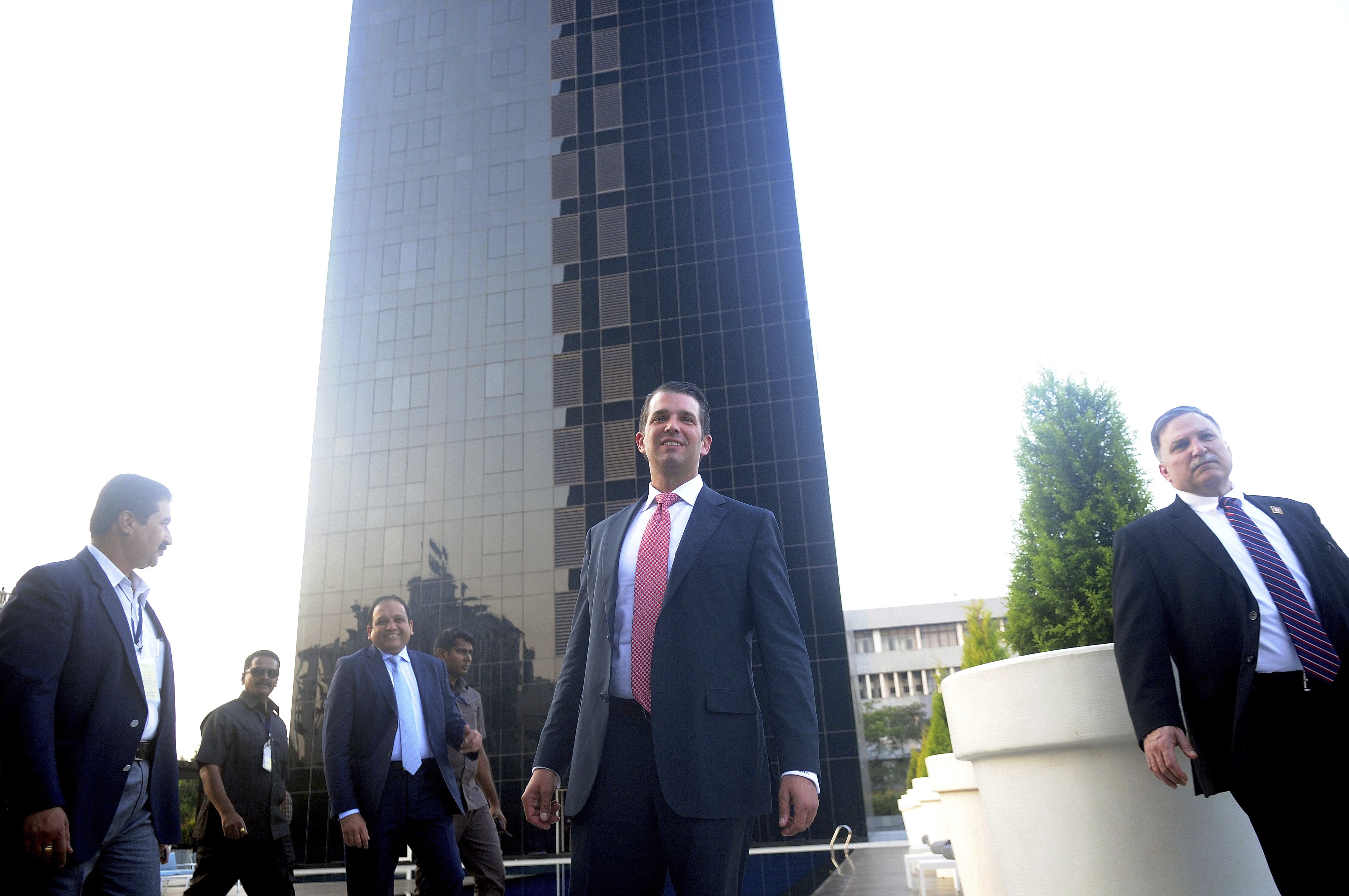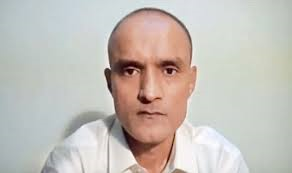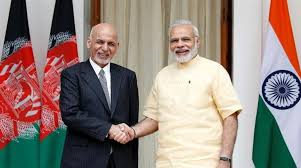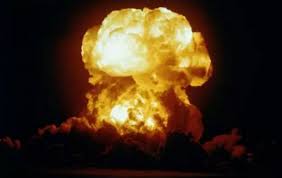THANE, India — Betsy Broder, who tracks international fraud at the Federal Trade Commission, was in her office in Washington last summer when she got a call from two Indian teenagers.
Calling from a high-rise building in a suburb of Mumbai, they told her, in tones that were alternately earnest and melodramatic, that they wanted to share the details of a sprawling criminal operation targeting Americans. Ms. Broder, who was no stranger to whistle-blowers, pressed the young men for details.
“He said his name was Adam,” she said, referring to one of the pair. “I said: ‘Your name is not Adam. What does your grandmother call you?’ He said, ‘Babu.’”
Babu was Jayesh Dubey, a skinny 19-year-old with hair gelled into vertical bristles, a little like a chimney brush. He told her that he was working in a seven-story building and that everyone there was engaged in the same activity: impersonating Internal Revenue Service officials and threatening Americans, demanding immediate payment
If they reached a person who was sufficiently terrified or gullible — this was known in the business as a “sale” — they would instruct that person to buy thousands of dollars’ worth of iTunes cards to avoid prosecution, they said; the most rattled among them complied. The victim would then send the codes from the iTunes cards to the swindlers, giving them access to the money on the card.
As it happened, the United States government had been tracking this India-based scheme since 2013, a period to cover back taxes during which Americans, many of them recent immigrants, have lost $100 million to it.
Though India had no reputation as a large-scale exporter of fraud in the past, it is now seen as a major center for fraud, said Suhel Daud, an F.B.I. agent who serves as assistant legal attaché at the embassy in New Delhi. Several trends have converged to make this happen, he said: a demographic bulge of computer-savvy, young, English-speaking job seekers; a vast call-center culture; super-efficient technology; and what can only be described as ingenuity.
“They have figured all of this out,” Mr. Daud said. “Put all of these together, with the Indian demographics in the U.S., and it’s a natural segue. Whatever money you’re making, you can easily make 10 times as much.”
‘I Want Money. That’s Why.’
Pawan Poojary and Jayesh Dubey, best friends and college dropouts, were impressed with the Phoenix 007 call center in Thane, a suburb northeast of Mumbai. The interviewer carried an iPhone; there were racing sport bikes parked outside, and, as Mr. Poojary put it, “girls roaming here and there.” The monthly salary was average for call centers, 16,000 rupees (about $230), they said, but the bonuses were double or triple that, based on sales.
The two friends had been playing a video game for up to eight hours a day, pausing occasionally to eat. They wanted in.
“At that time, in my mind is that I want money,” Mr. Poojary, 18, said. “That’s it. I want money. That’s why.”
They said they showed up for training in a room of young Indians like themselves, the first in their family to be educated in English. They were a slice of aspirational India: Mr. Poojary’s father, who owned two welding shops, was adamant that his son would rise to a higher place in society, an office job. Mr. Poojary was afraid to tell him he had dropped out of college.
The trainer assigned them names, Paul Edward and Adam Williams, and handed out a six-page script that started out, “My name is Shawn Anderson, with the department of legal affairs with the United States Treasury Department,” the teenagers said.
“We read the script, and I asked, ‘Is this a scam?’” Mr. Poojary said. “He said, ‘Yes.’”
“At that time I am money-minded. I thought, ‘O.K., I can do this,’” he said.
Mr. Poojary was excited and nervous about speaking to an American for the first time, and he was alarmed by the resulting bursts of profanity. Mr. Dubey said he tried to commit the entire experience to memory, in case he and Mr. Poojary someday decided to start a business of their own.
“I just wanted to become a great scammer,” Mr. Dubey said. “Everyone was scamming around me. I thought, ‘I will also become a great scammer.’”
The key to the whole thing, Mr. Dubey decided, was a psychological fact: Americans fear their state.
“I think they actually are really afraid of their government,” he said. “In India, people are not afraid of police. If anyone wants to come and arrest, they say, ‘Come and arrest.’ It is easy to get out of anything. But in America they are afraid. We just need to tell them, ‘You are messing with the federal government,’ and that is all.”
Preying on Fear
Inaben Desai, of Sugar Land, Tex., came home from grocery shopping, and her mother handed her the phone, eyes wide with alarm. Someone was on the line from the government, her mother said. They had called three or four times while she was out.
Ms. Desai, 56, worked as a cashier at Walmart. When she picked up the phone, a gruff-voiced man told her that she had failed to pay fees when she got her United States citizenship, in 1995, and that unless she did so she would be deported back to India, she said. When Ms. Desai said she needed to call her husband, a woman got on the phone, speaking sympathetically, in her native Gujarati.
“She said, ‘If you involve your husband, there’s going to be more problems,’” Ms. Desai said. “‘Your husband is going to get in trouble, too. Don’t involve your husband.’”
Ms. Desai had begun to cry. Still on the line with the woman, she took all the cash she had on hand and drove to a nearby grocery store, where she bought $1,386 in prepaid debit cards. Then the woman instructed her to go to her bank, transfer close to $9,000 to the account of someone named Jennifer, in California, and then fax confirmation and confidential details about her account.
“The bank lady tried to stop me, and she said, ‘This is your personal information,’” Ms. Desai said. “But I’m scared, and I faxed it to them because I’m scared of what would happen to my family.” The swindlers, who now had access to her bank balance, called back to demand another sum close to $9,000. Ms. Desai had to drive to another bank branch to make the transaction. The total amount she transferred, $17,786, was nearly all her savings.
Mr. Poojary was not the person who called Ms. Desai, whose case dates to 2014. But a similar conversation prompted him to contact the United States government. He recalled the woman’s name as Regella, and said that when she begged him to give her a little time, Mr. Poojary felt so sorry for her that he went to his supervisor, who told him to push harder.
“I just feel guilty at that time,” he said. “We are also Indians. We also don’t have money. They also don’t have money.”
A few days later, he called the main switchboard at the I.R.S. and said he wanted to pass on information about a crime. “They are not listening, they are just laughing at me,” he said.
Finally, he was transferred to Ms. Broder, the Federal Trade Commission’s counsel for international consumer protection.
“He was fairly insistent,” she recalled. “He was determined. The number of times he called me was overwhelming. I would guess that is why he was reaching out to me, because he wanted some form of law enforcement to take it down.”
The Raid
The risk of expanding a fraud aggressively is that the range of potential informants also expands. Supervisors may humiliate employees in front of their peers; paychecks may arrive late or not at all; ringleaders may spend so freely that they attract tax officials’ gaze.
The so-called Mira Road scam, named for the building’s neighborhood, had moved into a single floor of the seven-story high-rise in early 2016. By summer it filled the whole building.
“It got big,” said Mr. Daud, the F.B.I. agent. “And when it gets big, you leave bread crumbs.”
Nitin Thakare, a senior police inspector at the crime branch in Thane, will not say much about the person who contacted him in September with a tip.
But he will describe the raid, in loving, cinematic detail: How at 10 p.m., after the last of the call center staff had arrived for the night shift, 200 police officers streamed up the main staircase, blocking every exit and detaining all 700 people who worked inside.
As morning approached, the street outside filled with the workers’ parents, wives and girlfriends, said Amar Verma, who sells tea on the corner. “There was lots of sobbing,” he said. “There was one mother who came with her car. She was crying alone, the poor thing. She was sitting on the pavement in front of me, crying. Her child had not come home.”
Inside, the police cut the phone lines. Under interrogation, the suspects, one after another, insisted that they had been planning to quit just as soon as they collected their next paycheck, Mr. Thakare said. But the money made it hard to walk away, and after a few pay cycles, their qualms had faded. He felt for them.
“These are the youth of our nation,” he said. “They were misguided. For the first few days it seems glamorous. Someone is teaching them an accent, people are smoking, there are women. There’s freedom and night life. The youth love that.”
The police said that others, like the landlord who had rented the building to the swindlers, wondered why the authorities cared in the first place. “He said, ‘What happened?’” said Parag Manere, a deputy commissioner of police. “‘We are not cheating people in India! We are cheating people in the U.S.! And the U.S. cheats the whole world!’”
What they had stumbled on, it became clear, was a branch of a much larger network, the police said. Five days later, the police organized a second raid, of facilities in Ahmedabad, Gujarat, which they believed to be a nerve center. The Justice Department had come to the same conclusion: It has since released an indictment tracing 1.8 million calls targeting American residents to five call centers in Ahmedabad that used various schemes to defraud more than 15,000 people out of hundreds of millions of dollars.
By the time the police arrived at the Ahmedabad location, though, the syndicate was gone. “The place where we raided, it was a thousand-seat call center,” Mr. Manere said. “When we got there it was empty. Empty. Nothing. Not a piece of paper. Empty halls.”
‘It Will Not Stop’
Mr. Poojary said he happened to be at a job interview when he learned that the call center in Mira Road had been raided.
It was an honest, mundane customer service job, advising the customers of Delta Air Lines on such matters as lost baggage and frequent-flier miles, for a mediocre monthly salary of $150. He was sitting on a waiting room sofa when he picked up The Times of India and read that 700 of his co-workers had been detained the night before.
The first person he contacted was Ms. Broder, to tell her that the raid had hit the same operation he had described to her. That night, he and Mr. Dubey, who had left the Mira Road center after contacting Ms. Broder, celebrated over drinks.
“We brought it down,” Mr. Dubey said. “It started out as fun, then it got boring, then we truly understood the good and dirty parts of the job. Then we decided to bring it down.”
Whistle-blowers’ motives are often murky, and in their early conversations, Ms. Broder wondered fleetingly whether the two friends were calling on behalf of the scheme’s organizers to determine what American investigators knew. In an interview with The New York Times, the two men acknowledged being fired from the call center after getting into an altercation with co-workers.
Their claim to have brought down the center is unfounded, according to Indian and American investigators, who said that the raid in Thane was carried out entirely by the local police, without assistance from American officials. The Thane police said their informant was not employed by the swindlers. The raid was international news, and in the weeks that followed, the number of fraudulent I.R.S. calls to Americans dropped 95 percent, according to the Better Business Bureau.
But those who believe that the drop is permanent should consider this: In the weeks after Mr. Poojary and Mr. Dubey left the center, several lucrative job opportunities were presented to them. Each involved a phone scheme targeting Americans, they said. There was the Viagra scam, in which callers offered to sell cut-rate Viagra; there was a low-interest loan scam, in which people were asked to deposit $1,000 as proof of income. There was a tech scam, which warned Americans that their computer had been infected by a virus, and an American Express scam, which involved gathering personal information to break through security barriers on online accounts.
“Even if you shut down 400 buildings in India, it will not stop,” said Mr. Dubey, now known by his Delta clients as Jacob Davis. The two friends say they have given up on the notion of getting rich quickly, or of being paid by the United States government for the information they provided.
It has been replaced by a new hope — that, perhaps as a result of the public service they have provided, they will be granted visas to the United States, the home of so many of their favorite things: “The Fast and the Furious,” Vin Diesel and Robert Downey Jr. “I’ve spent so much time getting to know it, familiarizing myself with its states, talking to its people,” Mr. Dubey said. “I feel a bond.”





